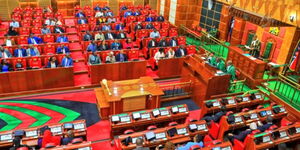Kenya has recorded a significant drop in the number of birth certificates issued over the past two years, a trend that mirrors a national decline in fertility, according to the latest report by the Kenya National Bureau of Statistics (KNBS).
The report shows that the number of birth certificates issued fell from 1,987,910 in 2022 to 1,349,949 in 2024 — a drop of more than 600,000. KNBS attributed the decline to both reduced birth registrations and a shortage of official birth certificate booklets.
In 2024, Nairobi County recorded the highest number of birth certificates issued at 152,433. It was followed by Kiambu County with 67,632 and Kilifi County with 62,352.
At the lower end, Samburu County had the fewest birth certificates issued at 6,230, followed by Lamu with 6,845 and Isiolo with 9,378.
In the coastal region, Mombasa consistently recorded the highest number of registered birth certificates over the three-year period. The county issued 58,226 certificates in 2022, 57,988 in 2023, and 40,821 in 2024.
Kwale came second in the region with 37,080 certificates in 2022, 36,495 in 2023, and 33,915 in 2024. Kilifi reported a peak in 2023 with 90,602 certificates before falling to 62,352 in 2024.
Kisumu County also experienced a sharp drop in the number of birth certificates issued, falling from 54,363 in 2022 to 35,511 in 2024.
Other urban centres such as Nakuru and Eldoret (Uasin Gishu) registered similar trends. Nakuru’s numbers declined from 88,489 to 62,118 over the same period, while Uasin Gishu dropped from 52,876 to 35,931.
The drop in birth registration aligns with a steady national decline in fertility rates. The Total Fertility Rate (TFR)—which measures the average number of children per woman—dropped from 2.8 in 2022 to 2.6 in 2023 and further to 2.3 in 2024.
The General Fertility Rate (GFR), which indicates the number of births per 1,000 women of reproductive age, also fell from 98 in 2022 to 88.3 in 2023 and 75.9 in 2024.
Similarly, the Crude Birth Rate (CBR), measuring births per 1,000 people, declined from 24.1 in 2022 to 21.2 in 2024.
Age-specific fertility data show that women aged 20–24 and 25–29 had the highest fertility rates during this period. However, these also declined, from 147 and 141 in 2022 to 128 and 117 in 2024, respectively.












